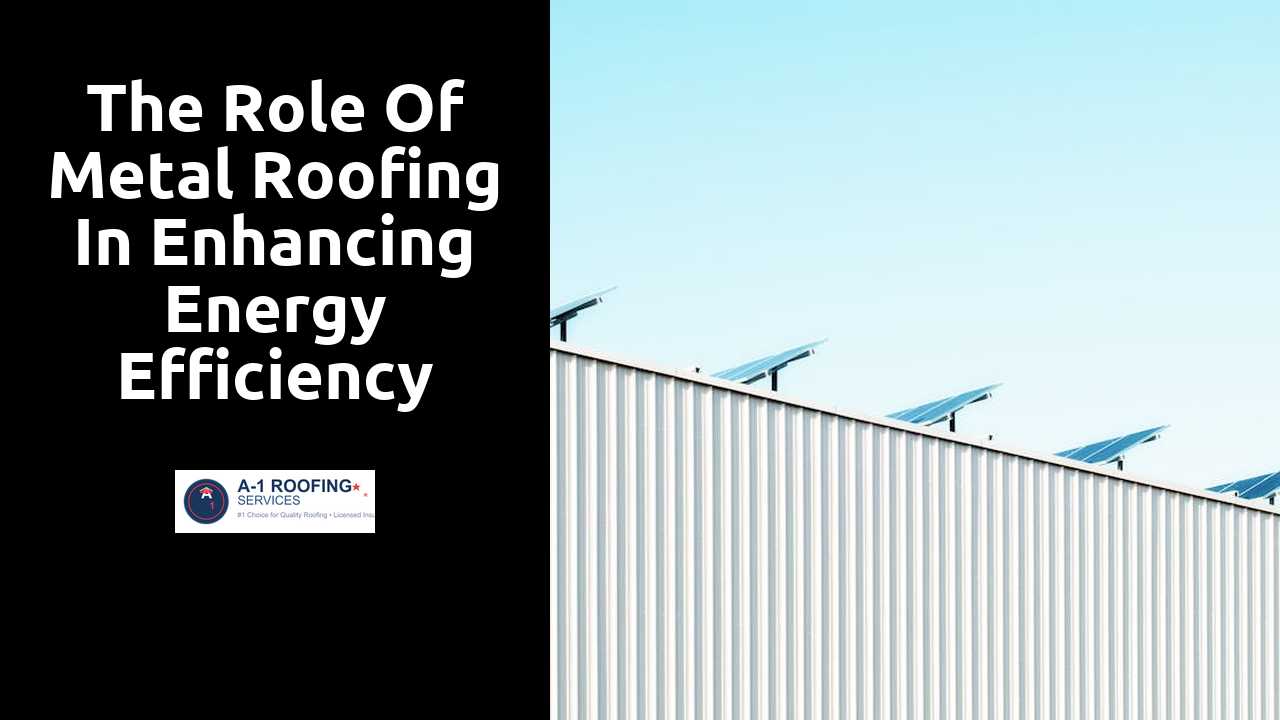
The Role of Metal Roofing in Enhancing Energy Efficiency
Table Of Contents
Lifespan and Durability
Metal roofing is celebrated for its exceptional lifespan, often outlasting traditional roofing materials by several decades. While asphalt shingles may require replacement every 15 to 20 years, metal roofs can last 40 to 70 years or more, depending on the material type and installation quality. This longevity not only reduces the need for frequent replacements but also minimizes waste and disruption over time. The inherent durability of metals such as steel and aluminum allows them to withstand harsh weather conditions, including heavy rain, snow, and extreme temperatures.
In addition to a long lifespan, metal roofs exhibit superior durability against corrosion, impact, and fire. Many metal roofing products come with protective coatings that enhance their resilience over time. This ability to endure harsh elements without significant degradation translates into a lower overall cost for homeowners in the long run. With fewer maintenance requirements and less frequent repairs, metal roofing systems prove to be a wise investment for those seeking a reliable, long-lasting solution.
Click here for additional info.
Long-term Benefits of Metal Roofing
Metal roofing is known for its impressive lifespan, often lasting 40 to 70 years compared to traditional shingle roofs that may require replacement every 15 to 20 years. This longevity translates into fewer roof replacements over time, significantly reducing the need for ongoing maintenance and associated labor costs. The durability of metal roofing materials also means they are less susceptible to weather-related damage, such as cracking, fading, or warping, which further contributes to their overall performance and resilience.
In addition to long-lasting performance, metal roofs can increase a home’s value. Potential buyers often view metal roofs as a desirable feature due to their durability and energy efficiency. This can result in a higher resale value compared to homes with traditional roofing systems. Moreover, many insurance companies offer discounts for homes with metal roofs, providing further financial benefits. Over the years, these advantages can lead to significant savings, both in maintenance costs and through increased home equity.
Environmental Considerations
Metal roofing significantly contributes to reducing the environmental footprint of buildings. The materials often used in metal roofing, such as aluminum and steel, are typically sourced from recycled content. This characteristic not only conserves natural resources but also minimizes energy consumption during the manufacturing process. By opting for these sustainable materials, homeowners can play a role in promoting recycling and responsible consumption practices.
In addition to using sustainable materials, metal roofs reflect solar energy, which helps in reducing heat absorption by buildings. This reflective property leads to cooler buildings, decreasing the demand for air conditioning and, subsequently, energy consumption. By lowering energy usage, metal roofing plays a direct role in reducing greenhouse gas emissions associated with fossil fuel energy production. Overall, the integration of metal roofing not only supports environmental sustainability but also aligns with growing trends toward eco-friendly construction practices.
Sustainability of Metal Roofing Materials
Metal roofing materials are often made from recycled content. This contributes to reducing the demand for new raw materials. Many manufacturers prioritize recycling within their production processes, further decreasing waste. Additionally, metal roofs tend to have a long lifespan, minimizing the frequency of replacements and the associated environmental impact.
Another key aspect is the energy efficiency of metal roofing, which supports sustainability efforts. A well-constructed metal roof reflects sunlight and helps keep homes cooler, reducing the reliance on air conditioning. This not only lowers energy consumption but also decreases greenhouse gas emissions over time. The ability to integrate solar panels with metal roofing systems enhances their renewable energy potential, aligning with broader goals of reducing carbon footprints in buildings.
Cost Savings Through Energy Efficiency
Energy-efficient homes often experience significant reductions in utility bills. Metal roofing contributes to this by reflecting solar heat rather than absorbing it. This reflective quality helps maintain more consistent indoor temperatures, which means HVAC systems do not work as hard. Homeowners can enjoy lower energy costs throughout the year, especially during peak summer months when energy use typically spikes.
Furthermore, the initial investment in metal roofing can lead to substantial long-term savings. While the upfront cost may be higher compared to traditional roofing materials, the durability and longevity of metal roofs often outweigh these initial expenses. Homeowners benefit from less frequent replacements and lower maintenance costs over time. The energy efficiency achieved with metal roofing translates into a lower carbon footprint, offering both financial and environmental advantages.
Analyzing Long-term Financial Benefits
Investing in metal roofing can yield significant long-term financial advantages for homeowners. The initial installation cost may be higher than traditional roofing materials, but the durability of metal roofs often means fewer repairs and replacements over time. This longevity contributes to lower maintenance expenses and eliminates the need for frequent roof updates. Additionally, many metal roofing systems are designed to reflect solar heat, which helps reduce energy consumption and lower utility bills.
Homeowners can also take advantage of various tax credits and incentives associated with energy efficiency improvements. Many states offer financial programs that encourage the installation of energy-efficient roofing options, providing rebates or tax deductions that can offset initial costs. As energy prices continue to rise, the potential for savings becomes even more significant, ultimately increasing the value of the property. The overall lifespan and effectiveness of metal roofing contribute to a sound investment in both domestic comfort and financial stability.
Related Links
Maintenance Tips for Longevity of Metal RoofsInstallation Guidelines for Metal Roofing on Residential Structures